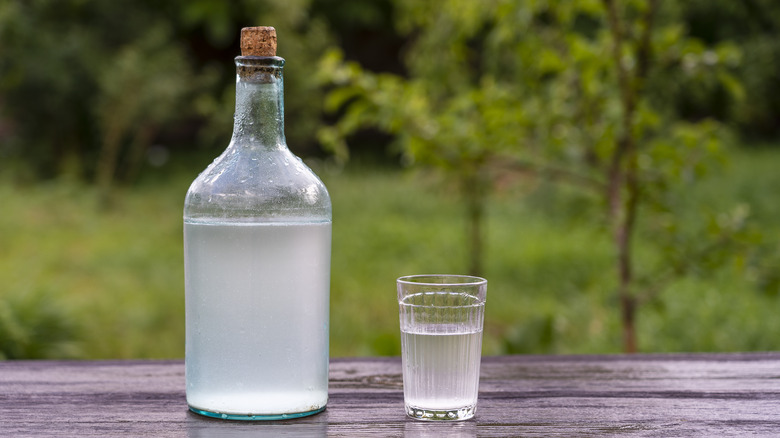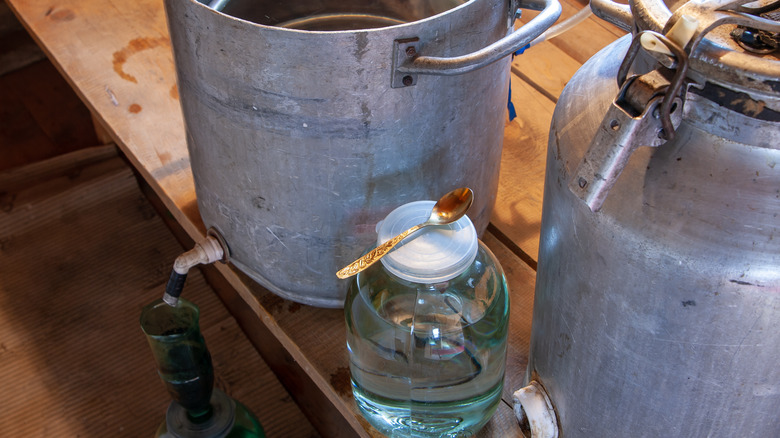How Much Alcohol Does Moonshine Typically Have?
Moonshine isn't easily found on a shelf, so being able to read a label to look for ingredients and an ABV number can be tricky. The high-proof liquor made a name for itself during Prohibition when thirsty drinkers distilled this spirit on the low, often at night, and hid bottles away from anyone who might report any questionable alcohol-making activities.
The liquor ranges in terms of alcoholic potency. How the alcohol is processed can impact its overall alcohol content. And generally, the longer a particular moonshine is distilled, the greater ABV the drink will hold.
Moonshine isn't particularly easy to make, however, and its reputation as a secretive alcohol hasn't done much to further the public's opinion of the drink. Yet more labels are setting out to change that, offering moonshine in bottles that can be sold legally in stores. What kind of alcoholic content should drinkers be prepared for?
Tasting white lightning
Unlike whiskey, which is left to age in barrels for years, moonshine is immediately bottled and distributed. This lack of aging in the production process helps give moonshine its noticeable kick. As soon as you open the bottle, you can detect the potential burn of this drink simply by smelling the clear liquid straight from the glass.
There's no debating that moonshine packs a real punch. With an ABV that can range from 40% all the way up to 80%, the drink requires a certain level of gumption to put back. The "softest" moonshines carry a similar alcohol content to that of vodka, and while most registered distilleries set out to make moonshine in the 40% ABV range, illegal operations aren't regulated by the same set of rules and can produce alcohol that pushes a drinker's tolerance for beverages, reaching as high as 80% ABV per drink.

